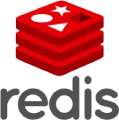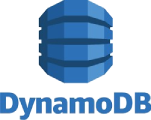NoSQL Database Reviews – Choosing the Right Database for Your Needs
NoSQL databases have become essential in handling large-scale, flexible, and high-performance data needs. This page explores some of the most popular NoSQL databases through detailed reviews and comparisons. We’ll cover MongoDB vs Cassandra, Redis vs Memcached, and Couchbase vs DynamoDB, focusing on their strengths, typical use cases, and key technical differences. Finally, you’ll find a comparison summary highlighting aspects like scalability, query language, support, and ACID compliance.
MongoDB vs Cassandra
MongoDB and Cassandra are among the most widely used NoSQL databases, but they serve different purposes and architectures. MongoDB is a document-oriented database known for its ease of use and flexible JSON-like data model.
Key Differences
MongoDB stores data in BSON documents, which allows for nested structures and complex queries. It supports secondary indexes, rich queries, and aggregation pipelines, making it popular for applications that require flexible querying and real-time analytics.
Cassandra, on the other hand, is optimized for write-heavy workloads and fault tolerance. It uses a ring-based architecture without a single point of failure and offers eventual consistency with tunable consistency levels. Cassandra’s query model is more limited but designed for speed and horizontal scaling.
Use Cases
- MongoDB: Content management, e-commerce platforms, real-time analytics, and applications requiring dynamic schemas.
- Cassandra: IoT, messaging platforms, and systems needing high write throughput with guaranteed uptime.
Redis vs Memcached
Redis and Memcached are in-memory data stores that accelerate applications by caching frequently accessed data. They both provide fast key-value storage but have different capabilities and complexities.

Key Differences
Memcached is simpler and designed primarily for caching. It stores data in memory as key-value pairs and is easy to deploy and scale horizontally. However, it has limited data structures and no persistence.
Redis is not just a cache but it is a data structure server that can store strings, hashes, lists, sets, sorted sets, etc. In addition to supporting persistence on disk, replication, scripting, and transactional capabilities, it is designed for use in a broader context than might be implied by that of a cache.

Use Cases
- Memcached: Simple caching layers for web applications, session stores, and lightweight key-value caches.
- Redis: Real-time analysis, leading boards, message brokering, cooking, and data caching still with persistence requirements.
Couchbase vs DynamoDB
Leading NoSQL databases considered distributed in nature are Couchbase and DynamoDB databases. They combine document store and key-value capabilities, specifically when high-volume usage may be occurring.

Key Differences
Couchbase provides a flexible JSON document-model, built-in caching layer, and SQL-like query language coined as N1QL. DynamoDB, an AWS-managed service, focuses on seamless scalability and availability. It uses a key-value and document data model and integrates tightly with the AWS ecosystem. It provides features like on-demand capacity, global tables, and built-in security and backup.

Use Cases
- Couchbase: The kind of applications include flexible information retrieval and real-time synchronization, and either deployment on hybrid cloud or at the edge.
- DynamoDB: Serverless applications, large-scale web services, and systems that benefit from managed AWS infrastructure.
How They Scale Under Load
Scalability is one of the main reasons developers turn to NoSQL databases. Whether you’re handling massive write volumes, unpredictable traffic spikes, or globally distributed workloads, each database has its own approach to distributing data and maintaining performance as demand grows. Here’s how the leading NoSQL systems stack up when it comes to scaling.
MongoDB
Uses sharding for horizontal scaling. Well-suited for moderate to large datasets where flexibility and balanced performance matter.
Cassandra
Excels in horizontal scalability with its masterless, peer-to-peer architecture. Handles massive write loads across distributed environments.
Redis
Primarily scales vertically. Cluster mode supports horizontal scaling, but performance is best when data fits in memory.
Memcached
Scales horizontally with ease by adding nodes, though it lacks native clustering or built-in replication features.
Couchbase
Built for horizontal scaling, combining data distribution, replication, and an integrated cache layer.
DynamoDB
Designed for elastic scalability. AWS manages auto-scaling, partitioning, and throughput under the hood with near-zero admin effort.
Querying the Data
Not all NoSQL databases offer the same flexibility when it comes to querying. Some are optimized for simple key-based lookups, while others provide rich languages for filtering, joining, and aggregating complex datasets. Your choice will depend on how structured your data is and how often you need to run complex queries on it.
MongoDB
Rich and expressive query language using JSON-like syntax. Supports secondary indexes, filtering, aggregations, and full-text search.
Cassandra
Uses CQL, similar to SQL in syntax but limited in relational features. Optimized for fast access using primary keys and clustering columns.
Redis
Offers commands specific to each data type. Not suited for complex querying but excels at fast, predictable operations.
Memcached
Provides basic key-based access only. No support for structured queries, filtering, or indexes.
Couchbase
N1QL allows SQL-style querying of JSON documents. Supports indexing, joins, and flexible filtering.
DynamoDB
Uses PartiQL and a structured API for key-value queries. Supports conditional reads/writes but limited relational capabilities.
Support, Maintenance & Ecosystem
Beyond performance, long-term usability depends on how easy a database is to maintain and how well it integrates with your tools and workflows. This includes documentation, community support, commercial backing, and the availability of client libraries, monitoring tools, and deployment options. Some databases thrive in open-source ecosystems, while others rely on managed service models. Here’s how each one compares.
MongoDB
Well-established ecosystem with strong community support, robust documentation, and enterprise options via MongoDB Atlas.
Cassandra
Open-source with contributions from major tech companies. Supported commercially by vendors like DataStax.
Redis
Backed by Redis Inc., with an open-source base and enterprise offerings. Active community and broad tool/language support.
Memcached
Lightweight and widely supported in hosting environments. Fewer advanced tools, but simple to run and maintain.
Couchbase
Enterprise-ready with integrated tooling, SDKs, and managed cloud offerings. Includes mobile and edge database options.
DynamoDB
Deeply integrated with AWS services. Fully managed with monitoring, backups, and global replication handled by AWS.
Data Integrity & Transactions
Not every NoSQL database is built with strong consistency in mind. Some prioritize availability and speed over strict guarantees, while others offer full ACID compliance with varying degrees of performance trade-offs. If your application needs reliable transactions, rollback support, or consistent state across multiple operations, it’s important to understand how each database handles integrity and concurrency.
MongoDB
Fully supports multi-document ACID transactions. Suitable for workloads where consistency and rollback support matter.
Cassandra
Favors availability over consistency. Supports lightweight transactions for limited atomic operations.
Redis
Provides command-level atomicity and Lua scripting. Limited to single-node transactional guarantees.
Memcached
Not designed for data integrity. No persistence or transactional features—purely a volatile cache.
Couchbase
Supports full ACID transactions, including multi-document operations. Balances durability and performance.
DynamoDB
Offers ACID transactions through its API. Strong consistency guarantees, though at additional performance and cost overhead.
Summary
Choosing a NoSQL database depends on your needs for scale, queries, consistency, and management. MongoDB offers flexible documents and strong transactions. Cassandra handles massive write loads with high availability. Redis and Memcached focus on fast caching, with Redis supporting more features. Couchbase blends storage with caching for real-time apps. DynamoDB provides fully managed, automatic scaling on AWS. Knowing these differences helps you pick the right tool for your project.
